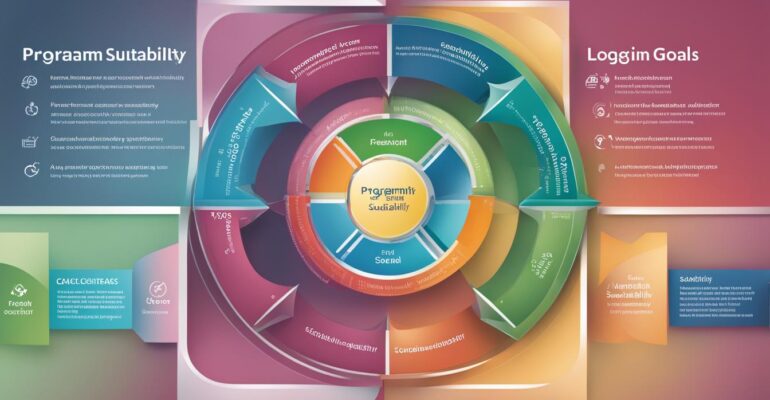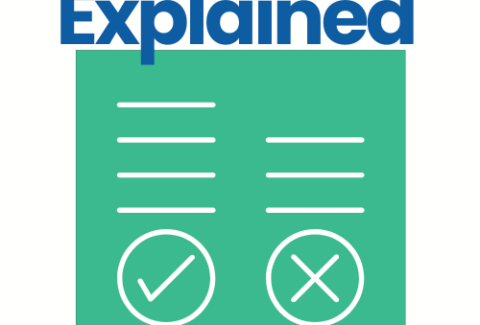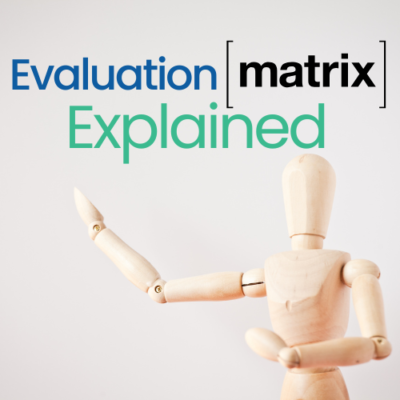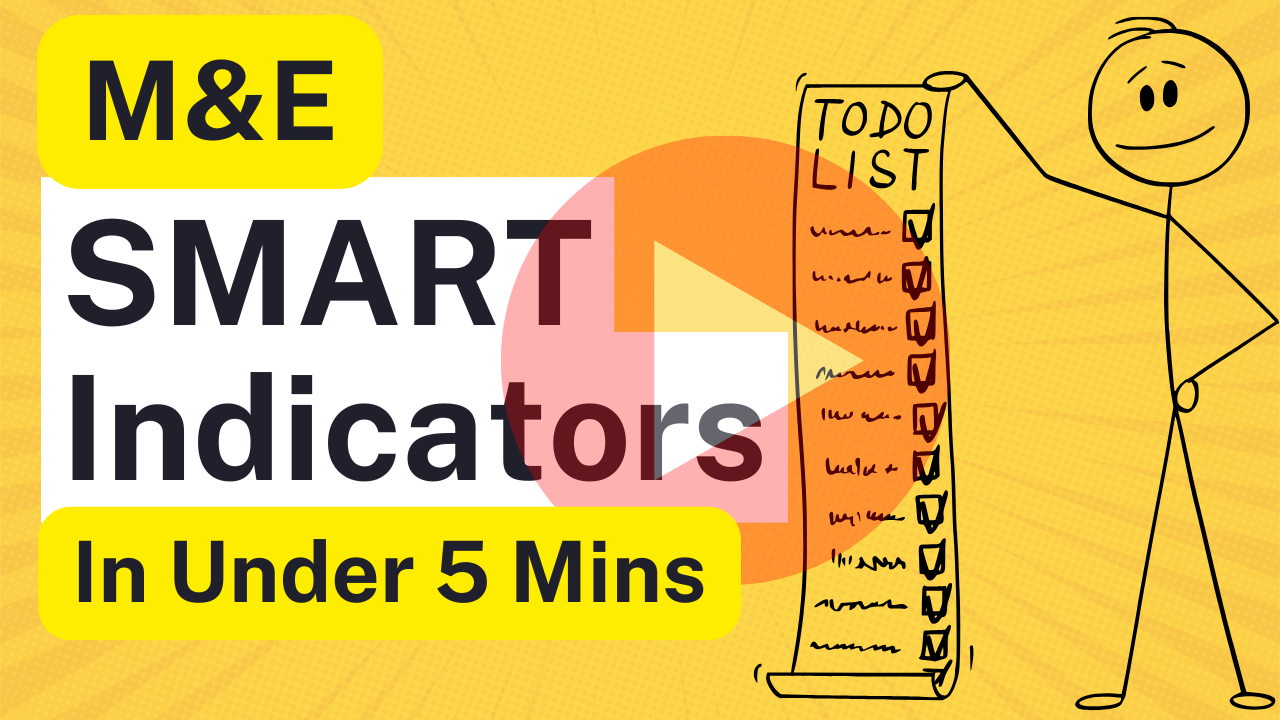How to Evaluate Program Logic and Goals Effectively
December 20, 2023 2023-12-20 7:03How to Evaluate Program Logic and Goals Effectively
Program evaluation is essential for assessing the effectiveness of a program’s logic and goals. Without proper evaluation, it’s challenging to determine the success of your program in achieving the desired outcomes. Evaluation criteria for program logic and goals help you assess your program’s clarity and completeness, measurability, assumptions and underlying theories, feasibility and sustainability, and much more. By using these criteria, you can determine whether your program is aligned with your goals and outcomes. Therefore, it’s crucial to understand the fundamentals of program evaluation, logic models, and goal setting to create an effective program assessment.
Key Takeaways:
- Program evaluation is essential for assessing the effectiveness of a program’s logic and goals.
- Evaluation criteria for program logic and goals help you assess your program’s clarity and completeness, measurability, assumptions and underlying theories, feasibility and sustainability, and much more.
- It’s crucial to understand the fundamentals of program evaluation, logic models, and goal setting to create an effective program assessment.
- Program effectiveness is the ultimate goal of evaluation.
- Continuous improvement is key to ensuring the ongoing effectiveness of your program.
Understanding Program Evaluation and Its Role in Assessing Program Logic and Goals
Program evaluation is essential for measuring the effectiveness of your program. It is the process of assessing a program’s structure, activities, and outcomes to determine its impact. Program evaluation plays a vital role in assessing program logic and goals as it provides insights into areas for improvement.
Evaluation criteria are used to measure the effectiveness and success of your program. They include assessing the clarity and completeness of your program’s logic model, setting measurable goals and objectives, evaluating feasibility and sustainability, and selecting appropriate evaluation methodologies. These criteria help ensure that your program’s activities align with its desired outcomes and that continuous improvement is incorporated into the assessment process.
It is important to note that program evaluation does not only focus on the end results but also on the overall process. Assessing the program’s process helps identify areas of improvement and provides lessons learned, which can lead to program enhancement and increased effectiveness.
Ultimately, the goal of program evaluation is to measure the effectiveness of your program and determine whether it is achieving its desired outcomes and goals. By gaining insights into the evaluation criteria that can help measure effectiveness, you can improve your program’s logic and goals and drive positive change.
Creating a Clear and Complete Logic Model
A logic model serves as a blueprint of your program’s theory of change. It identifies key program elements, including inputs, activities, outputs, and outcomes, and outlines the relationships between them.
To create a clear and comprehensive logic model, start by defining your program logic and goals. Clarify your program’s purpose, target audience, and desired outcomes. Then, outline the specific activities needed to achieve those outcomes, along with the expected outputs or results of those activities.
Next, ensure that your logic model is clear and complete. Consider using visual aids, such as diagrams or flowcharts, to illustrate the relationships between program elements. Identify any assumptions or underlying theories that inform your program logic and goals, and make sure they are explicitly stated in the model.
Finally, assess your logic model for measurability and feasibility. Ensure that all outputs and outcomes are measurable and that evaluation criteria are in place to assess them. Evaluate the feasibility and sustainability of your program by identifying potential barriers to success and developing strategies to overcome them.
Overall, a clear and complete logic model is critical to program evaluation. It provides a roadmap for program planning and implementation and serves as a basis for assessing program effectiveness and success.
Clarity and Completeness Evaluation Criteria
| Evaluation Criteria | Description |
|---|---|
| Clear Program Logic and Goals | Program logic and goals should be clearly stated and easy to understand. Ensure that all program elements are related to the overall program purpose and desired outcomes. |
| Explicit Assumptions and Underlying Theories | All assumptions and underlying theories that inform the program logic and goals should be explicitly stated in the logic model. |
| Measurable Outputs and Outcomes | All program outputs and outcomes should be measurable, and evaluation criteria should be in place to assess them. |
| Visual Aids | Visual aids, such as diagrams or flowcharts, can help make the logic model easier to understand and identify any gaps or inconsistencies. |
| Feasibility and Sustainability | The logic model should assess program feasibility and sustainability by identifying potential barriers to success and developing strategies to overcome them. |
Setting Measurable Goals and Objectives
Successful program evaluation relies heavily on setting clear and measurable goals and objectives. By defining specific, measurable, attainable, relevant, and time-bound (SMART) goals, you can effectively direct your program towards fulfilling its intended purpose. To set appropriate goals and objectives, it is essential to have a robust understanding of your program logic and goals, as well as the evaluation criteria that define measurability.
When establishing goals and objectives, consider the following:
- Start with your program’s mission. Understanding your program’s mission statement helps you define your program’s purpose and the intended outcomes. The mission statement should guide your program’s goals and objectives to achieve optimal results.
- Define specific and measurable objectives. Setting specific and measurable objectives will allow you to track progress, identify successes, and make changes when necessary. Ensure that your objectives are measurable against a set of pre-established evaluation criteria, such as outputs or outcomes that can be quantified.
- Consider the program’s resources. When setting goals and objectives, it is critical to consider the resources required to achieve them. Ensure that your goals align with the program’s available resources and timeframe. If your goals exceed the program’s resources, it can lead to unrealistic expectations and unattainable outcomes.
- Communicate goals and objectives effectively. Communicating goals and objectives effectively to all stakeholders within your program is crucial. It can help boost participation, collaboration, and investment in the program.
To evaluate whether goals and objectives are effectively set and measurable, consider the following evaluation criteria:
| Evaluation Criteria | Description |
|---|---|
| Specificity | Objectives should be clear and unambiguous to ensure a common understanding among program stakeholders. |
| Measurability and Quantifiability | Objectives should be specific and measurable to demonstrate their level of progress toward the established goal. |
| Relevance | Objectives should accurately support the goal and contribute to the overall success of the program. |
| Attainability | Objectives should be attainable with the available resources and time frame of the program. |
| Alignment with the Program’s Mission | Objectives should relate directly to the program’s mission statement, objectives, and goals. |
Uncovering Assumptions and Underlying Theories
In order to effectively evaluate program logic and goals, it is important to understand the assumptions and underlying theories that form the basis of the program. Uncovering these hidden elements can provide valuable insights into how the program is designed and what it seeks to achieve.
When evaluating assumptions and underlying theories, it is essential to consider the clarity and completeness of the program’s logic model. A logic model should clearly outline the program’s theory of change, identifying the underlying assumptions and theories that guide the program’s design and goals. Measuring the clarity and completeness of the logic model can help ensure a comprehensive program evaluation.
Another aspect to consider is the feasibility and sustainability of the program’s assumptions and underlying theories. For example, if the program relies on assumptions that are not supported by evidence, it may not be sustainable in the long run. It is crucial to evaluate the assumptions and underlying theories to determine their feasibility and their potential impact on the program’s overall effectiveness.
To ensure a comprehensive assessment, evaluation criteria for assumptions and underlying theories may include:
- The relevance of the assumptions and underlying theories to the program’s goals
- The consistency of the assumptions and underlying theories with program implementation
- The alignment of assumptions and underlying theories with the program’s target audience
- The accuracy of assumptions and underlying theories based on available evidence
By evaluating assumptions and underlying theories, program evaluators can gain deeper insights into the program’s framework and design, ensuring that the program is effective, feasible, and sustainable in the long run.
Example Evaluation Criteria for Assumptions and Underlying Theories
| Evaluation Criteria | Description |
|---|---|
| Relevance | Assess whether the assumptions and underlying theories are relevant to the program’s goals and objectives. |
| Consistency | Evaluate whether the assumptions and underlying theories are consistent with the program’s implementation. |
| Alignment | Consider whether the assumptions and underlying theories align with the program’s target audience and context. |
| Accuracy | Measure the accuracy of the assumptions and underlying theories based on available evidence and data. |
Assessing Feasibility and Sustainability
When evaluating the success of a program, it’s essential to consider not only its short-term effectiveness but also its long-term feasibility and sustainability. Evaluating the feasibility and sustainability of a program involves assessing its ability to continue operating in the future while achieving its intended goals.
Feasibility refers to the practicality of the program in terms of its implementation, resources, and budget. An evaluation criterion for feasibility involves examining the program’s ability to achieve its objectives within the allocated resources and time frame. Additionally, assessing feasibility requires a thorough understanding of the program’s potential risks and challenges and how they can be mitigated or avoided.
Sustainability refers to the ability of the program to continue operating over an extended period while maintaining its positive impact and achieving its goals. Several evaluation criteria can be used to assess program sustainability, including evaluating the availability and accessibility of resources necessary for continued success and analyzing how the program’s objectives align with the needs of the target audience.
When evaluating program feasibility and sustainability, it’s crucial to consider both internal and external factors that may impact the program’s long-term effectiveness. Utilize evaluation criteria related to program logic and goals that consider the program’s feasibility and sustainability when designing an assessment methodology.
Evaluating the feasibility and sustainability of your program can help you understand its potential for long-term success. Utilize the evaluation criteria discussed here and gain insights into the many factors that contribute to program effectiveness and longevity.
Choosing Appropriate Evaluation Methodologies
When it comes to evaluating program logic and goals, the choice of evaluation methodologies is critical. By selecting the appropriate evaluation methodologies, you can ensure the accuracy and reliability of your program evaluation. However, with so many different evaluation methodologies available, choosing the right one can be a daunting task.
To make the decision-making process more manageable, it is essential to have a clear understanding of the evaluation criteria related to program logic and goals. These evaluation criteria should inform the selection of evaluation methodologies, ensuring that they align with your program’s framework, objectives, and goals.
Some of the key evaluation criteria related to evaluation methodologies include:
- Validity and reliability of the methodology
- The extent to which the methodology meets your program’s assessment needs
- The level of complexity involved in implementing the methodology
- The amount of resources required to carry out the methodology
It’s also crucial to consider the specific evaluation methodologies available and assess their suitability in addressing your program’s evaluation needs. Some of the most common evaluation methodologies include:
- Surveys and questionnaires
- Interviews and focus groups
- Observations and site visits
- Data analysis and performance indicators
Each evaluation methodology has its advantages and disadvantages, and it’s vital to carefully evaluate them based on your program’s specific assessment requirements.
Example of Evaluation Methodologies Table

| Evaluation Methodology | Advantages | Disadvantages |
|---|---|---|
| Surveys and questionnaires | Cost-effective, easy to administer, and can collect data from a large sample size | May lack in-depth insights, may not capture all relevant data, and may have response bias |
| Interviews and focus groups | Can provide detailed and nuanced insights, enable in-depth understanding of data, and create a sense of involvement among participants | Expensive, time-consuming, and may have limited sample size |
| Observations and site visits | Provide first-hand data, and enable the collection of data on behaviors and context | May not provide participants’ true behaviors, may be influenced by the bystander effect, and may be time-consuming and expensive to carry out |
| Data analysis and performance indicators | Can provide detailed information on program performance, behavior, and outcomes, and can provide quantitative data | May lack nuanced insights, may not capture all relevant data, and may have limitations when applied to complex programs |
By considering the evaluation criteria related to program logic and goals and evaluating the available evaluation methodologies, you can choose the most appropriate methodology for assessing your program’s effectiveness and success.
Evaluating Program Effectiveness
After creating a clear logic model and setting measurable goals and objectives, it is crucial to evaluate whether your program is effectively achieving its desired outcomes and goals. Program effectiveness is the ultimate goal of program evaluation and is essential in determining the overall success of your program.
To evaluate program effectiveness, it is essential to understand the evaluation criteria related to program logic and goals. The program’s objectives must align with the program’s activities and its measurable outcomes. Assessing how well your program aligns and results in achieving its objectives is key to determining program effectiveness.
One of the most critical evaluation criteria for program effectiveness is measurability. It is essential to have well-defined and measurable objectives that can be quantified to determine whether the program is successful in achieving its goals.
Another essential evaluation criterion for program effectiveness is feasibility and sustainability. Sustainability ensures program success in the long run, and feasibility determines whether the program can achieve its goals and objectives practically, taking into account the resources available and any constraints present.
By evaluating program effectiveness, it is possible for program managers to determine whether the program is appropriately achieving its desired outcomes and goals. This evaluation allows managers to make data-driven decisions in real-time and determine any necessary changes.
“Evaluating program effectiveness is a continuous process of assessing and improving program impact over time” – Stephen R. Covey
Analyzing Goal Achievement
As you evaluate program logic and goals, analyzing goal achievement is a crucial step in determining program success. Achieving goals is a key indication that a program is making progress towards its intended outcomes and objectives. To assess goal achievement, it is necessary to determine whether the objectives have been met within a specific time frame and if they have contributed to the desired outcomes.
One important evaluation criterion for goal achievement is measurability. Goals and objectives must be specific, measurable, achievable, relevant, and time-bound, also known as the SMART criteria. Measurable goals are a critical component of program evaluation because they allow for clear progress tracking and goal achievement analysis.
It is also important to consider the relationship between program activities, outputs, and outcomes to assess goal achievement. The logic model developed in the earlier stages of program evaluation can help map out this relationship, providing a visual representation of program components and helping to identify areas of success or improvement.
Using the evaluation criteria related to goal achievement, you can determine whether your program is meeting its intended objectives and contributing to desired outcomes. Such analysis is essential for determining program effectiveness and success, and for enhancing your program’s framework to achieve better outcomes in the future.
Incorporating Continuous Improvement Strategies
Program evaluation is an ongoing process, and continuous improvement strategies are vital to enhancing the effectiveness of your program. By prioritizing continuous improvement, you can identify areas for enhancement and take proactive steps to improve your program’s logic and goals. Utilize the following strategies:
1. Collect data regularly
Regular data collection is crucial for understanding the impact of your program. Set up regular evaluation intervals and collect data consistently to track progress toward your goals. Utilize evaluation criteria specific to continuous improvement, such as measuring program outcomes against strategic objectives, to gain insights into your program’s effectiveness.
2. Utilize stakeholder feedback
Incorporate stakeholder feedback into your evaluation process to gain a better understanding of program impact and effectiveness. Use evaluation criteria to capture stakeholder feedback through surveys, focus groups, and other methods. Analyze the data collected and utilize it to develop actionable steps for program improvement.
3. Implement program enhancements
Implement program enhancements based on evaluation findings to improve the effectiveness and impact of your program. Use the evaluation criteria related to program enhancement to guide decision-making, and ensure that enhancements align with the program’s logic and goals.
By incorporating continuous improvement strategies into your program evaluation process, you can ensure that your program continues to meet the evolving needs of your target audience.
Implementing Evaluation Findings for Program Enhancement
Program evaluation is a crucial step in assessing the effectiveness and success of your program. Once you have collected evaluation findings, it’s time to use them to enhance your program logic and goals.
To implement evaluation findings effectively, it is essential to have a clear understanding of the program enhancement process. Evaluation criteria based on program goals, objectives, and logic model can provide valuable insights for program enhancement.
It’s important to prioritize the findings that will have the most significant impact on program effectiveness. Utilize these findings to improve program design and delivery. Implement changes that will enhance program performance and ensure the achievement of program goals.
Remember to communicate the findings and recommended changes to program staff, stakeholders, and funders. Seek their input, and collaborate to ensure the successful implementation of the recommended changes.
By incorporating evaluation findings into program enhancement, you can continuously improve your program’s impact and achieve desirable outcomes. Use evaluation findings to guide positive changes that will ensure the long-term success of your program.

Example: Program Enhancement Table
| Evaluation Findings | Program Enhancement |
|---|---|
| A lack of program accessibility for individuals with disabilities | Partner with local disability organizations to provide accommodations for individuals with disabilities |
| A low level of participation from target audience | Engage target audience through targeted marketing campaigns and outreach efforts |
| Ineffective program activities | Restructure program activities to align with program goals and better engage participants |
Conclusion
Assessing the effectiveness and success of your program is essential in achieving desirable outcomes. By utilizing the evaluation criteria for program logic and goals, program evaluation, logic model, goal setting, program assessment, program effectiveness, goal achievement, and evaluation methodologies, you can create a comprehensive framework and set measurable goals. Continuous improvement strategies can help you enhance your program and drive positive change for the betterment of your organization and target audience.
Remember, evaluation findings provide valuable insights for program enhancement. By implementing evaluation findings, you can continuously improve your program’s logic and goals. So, take into account the evaluation criteria discussed in this article and conduct a comprehensive program evaluation that helps you achieve your desired goals.
FAQ
How do I effectively evaluate program logic and goals?
To effectively evaluate program logic and goals, it is important to consider several key evaluation criteria. These include clarity and completeness of the logic model, measurability of goals, underlying assumptions and theories, feasibility and sustainability, and the choice of appropriate evaluation methodologies. By assessing these factors, you can gain valuable insights into the effectiveness and success of your program.
What is program evaluation and how does it assess program logic and goals?
Program evaluation is the process of assessing the effectiveness and outcomes of a program. It plays a crucial role in evaluating program logic and goals by measuring their alignment with desired outcomes. Through program evaluation, you can determine the extent to which your program is achieving its intended goals and make informed decisions for improvement.
Why is creating a clear and complete logic model important?
A logic model serves as a blueprint of your program’s theory of change. It outlines the relationships between program activities, outputs, and desired outcomes. Creating a clear and complete logic model is important because it helps ensure that your program’s components are well-defined and interconnected. This clarity enables effective evaluation of program logic and goals.
How can I set measurable goals and objectives for program evaluation?
Setting measurable goals and objectives is crucial for program evaluation. Measurability allows for objective and quantifiable assessment of goal achievement. When setting goals and objectives, it is important to clearly define the desired outcomes and identify specific indicators that can be measured to track progress. This enables accurate evaluation of program logic and goals.
What is the role of assumptions and underlying theories in program evaluation?
Every program is built upon assumptions and underlying theories. These shape the program’s logic and goals. In program evaluation, it is important to uncover and assess these assumptions and theories to determine their validity and influence on program outcomes. Understanding underlying theories helps in evaluating the effectiveness of your program and making necessary adjustments.
Why is assessing feasibility and sustainability essential in program evaluation?
Assessing the feasibility and sustainability of a program is crucial for long-term success. Feasibility evaluation involves determining if the program can be successfully implemented, given available resources and potential challenges. Sustainability evaluation examines the program’s ability to continue achieving its goals over time. By assessing these factors, you can ensure the effectiveness and longevity of your program.
How do I choose the appropriate evaluation methodologies for assessing program logic and goals?
Choosing the right evaluation methodologies is essential for accurate assessment of program logic and goals. Various evaluation methodologies, such as surveys, interviews, observations, and data analysis, can be used. The choice depends on the specific goals of the evaluation, available resources, and the nature of the program. By selecting the most appropriate methodologies, you can obtain reliable and valid evaluation results.
What are the evaluation criteria for assessing program effectiveness?
To evaluate program effectiveness, you can consider criteria such as goal achievement, impact on the target population, efficiency of resource utilization, stakeholder satisfaction, and the program’s ability to address the identified problem or need. By evaluating these criteria, you can determine whether your program is achieving the desired outcomes and make necessary improvements.
How do I analyze goal achievement in program evaluation?
Analyzing goal achievement involves assessing whether your program is successfully meeting its objectives and targets. This can be done by comparing the actual program outcomes with the predetermined goals. By analyzing goal achievement, you can determine the effectiveness and impact of your program and identify areas for improvement.
How can I incorporate continuous improvement strategies into program evaluation?
Continuous improvement is vital for maintaining program effectiveness. To incorporate continuous improvement strategies into program evaluation, it is important to regularly review evaluation findings, identify areas for enhancement, and implement necessary changes. This iterative process ensures that your program evolves and adapts to meet the changing needs of your target audience.
How do I implement evaluation findings to enhance program logic and goals?
Evaluation findings provide valuable insights that can inform program enhancement. By carefully analyzing the evaluation results, you can identify strengths, weaknesses, and areas for improvement in your program logic and goals. Implementing evaluation findings involves making necessary adjustments to enhance program effectiveness and ensure the achievement of desired outcomes.
What is the importance of evaluating program logic and goals?
Evaluating program logic and goals is essential to ensure the effectiveness and success of your program. Through evaluation, you can assess the alignment between program activities, outputs, and desired outcomes. This assessment helps you make informed decisions for program enhancement, set realistic goals, and achieve desirable outcomes for your organization and target audience.
Resources
- USAID Monitoring and Evaluation Framework: https://www.usaid.gov/evaluation
- The World Bank’s Program Evaluation Guidance: https://ieg.worldbankgroup.org/reports/world-bank-group-evaluation-principles
- The CLEAR Initiative’s Practical Guidance for Monitoring and Evaluation: https://www.globalevaluationinitiative.org/clear-network
- The Center for Development Cooperation’s M&E Resource Library: https://www.measureevaluation.org/resources/training/capacity-building-resources/basic-me-concepts-portuguese/IFRC_Monitoring%20and%20Evaluation%20handbook.pdf











